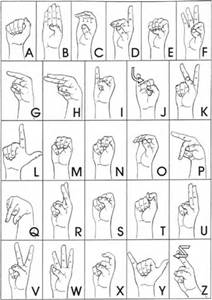Children who have a diagnosis of Autism show deficits in social communication and social interactions that impair their ability to sustain interactions in a back and forth conversation, share interests, or respond to social interactions (American Psychiatric Association, 2013). In addition the nonverbal communication is impaired in the areas of eye contact, body language, gestures, and a total lack of facial expressions and nonverbal communication (American Psychiatric Association, 2013).
Speech and Language Services
“The broad impact of the social communication challenges and problems with generalization for individuals with ASD necessitates service delivery models and individualized programs that lead to increased active engagement and build independence in natural learning environments. Speech-language pathologists should recognize the importance of family involvement and collaboration with a variety of professionals and communication partners, the facilitation of peer-mediated learning, the continuity of services across environments, and the importance of matching service delivery to meaningful outcomes. Speech-language pathologists should provide services that are connected with functional and meaningful outcomes. Therefore, they should provide pull-out services only when repeated opportunities do not occur in natural learning environments or to work on functional skills in more focused environments. Because of the limited impact of pull-out services focused on discrete skills, speech-language pathologists should ensure that any pull-out services are tied to meaningful, functional outcomes and incorporate activities that relate to natural learning environments.” – American Speech-Language-Hearing Association. (2006). Roles and Responsibilities of Speech-Language Pathologists in Diagnosis, Assessment, and Treatment of Autism Spectrum Disorders Across the Life Span.
Communicating
Students are encouraged to use verbal communication. To help in the facilitation of conversations visual cues can be used as a prompt to help engage students in a reciprocal conversations. Visual cues can be provided in two dimensional forms such a photographs, or digital images and through the use of three dimensional objects. We want to validate a students ability to communicate functionally. Our goal for our students is that they can express their wants, needs and ideas to anyone that they may encounter. We structure communication education around the students abilities and needs. We match the students level of understanding and ability to the appropriate mode of communication. Modes of communication may include American Sign Language, Picture Exchange Communication Systems or Augmentative Communication Systems.
See more at: http://www.asha.org/policy/ps2006-00105/#sthash.9zO1xInD.dpuf
Modes of Communication
With non-verbal students we need to teach them how to communicate wants and needs. We want our students to develop their communication skills so they are able to share thoughts and feelings. We want our students to express their individuality, interests and perspective.
- At the primary level students are taught to use American sign language to communicate more, yes, no and other simple responses. Students who are able to learn and perform American sign language may continue to be taught this form of communication in conjunction with verbal language if verbal language is possible. Some students are not able to use American sign language due to limitations in motor functions.
- The Picture Exchange Communication System (PECS) are picture symbols that at the basic level can be exchanged for a tangible item and at a more complex level can be used to have reciprocal conversations. PECS is designed to teach functional communication skills with an initial focus on spontaneous communication. It has been and continues to be implemented in a variety of settings and contexts (home, school, community) so users have the skills to communicate their wants and needs. PECS does not require complex or expensive materials since it uses picture symbols as the modality. PECS is a method to teach young children or any individual with a communication impairment a way to communicate within a social context.
Information retrieved from: http://en.wikipedia.org/wiki/Picture_exchange_communication_system
- Augmentative Communication Devices are an alternative way to help people with language disorders. These devices are designed to replace non-functional speech. These devices not only aid in communication, but they empower students to develop relationships and increase social, academic and self-advocacy skills.
Communication Education
Students in our classroom work with a speech therapist throughout their school day. Students work in 1:1 sessions where they work on a specific skill to master. Students combine individual speech sessions with group sessions where they can practice skills in a small group setting. These small group settings help students learn how to apply the skills learned in context and also provides them with the support they need to be successful. Generalization occurs through the school community. Settings such as an integrated art class or lunchtime allows the students to use the skills they are mastering in real and natural contexts. The staff is able to support our students and their communication goals across all settings.



